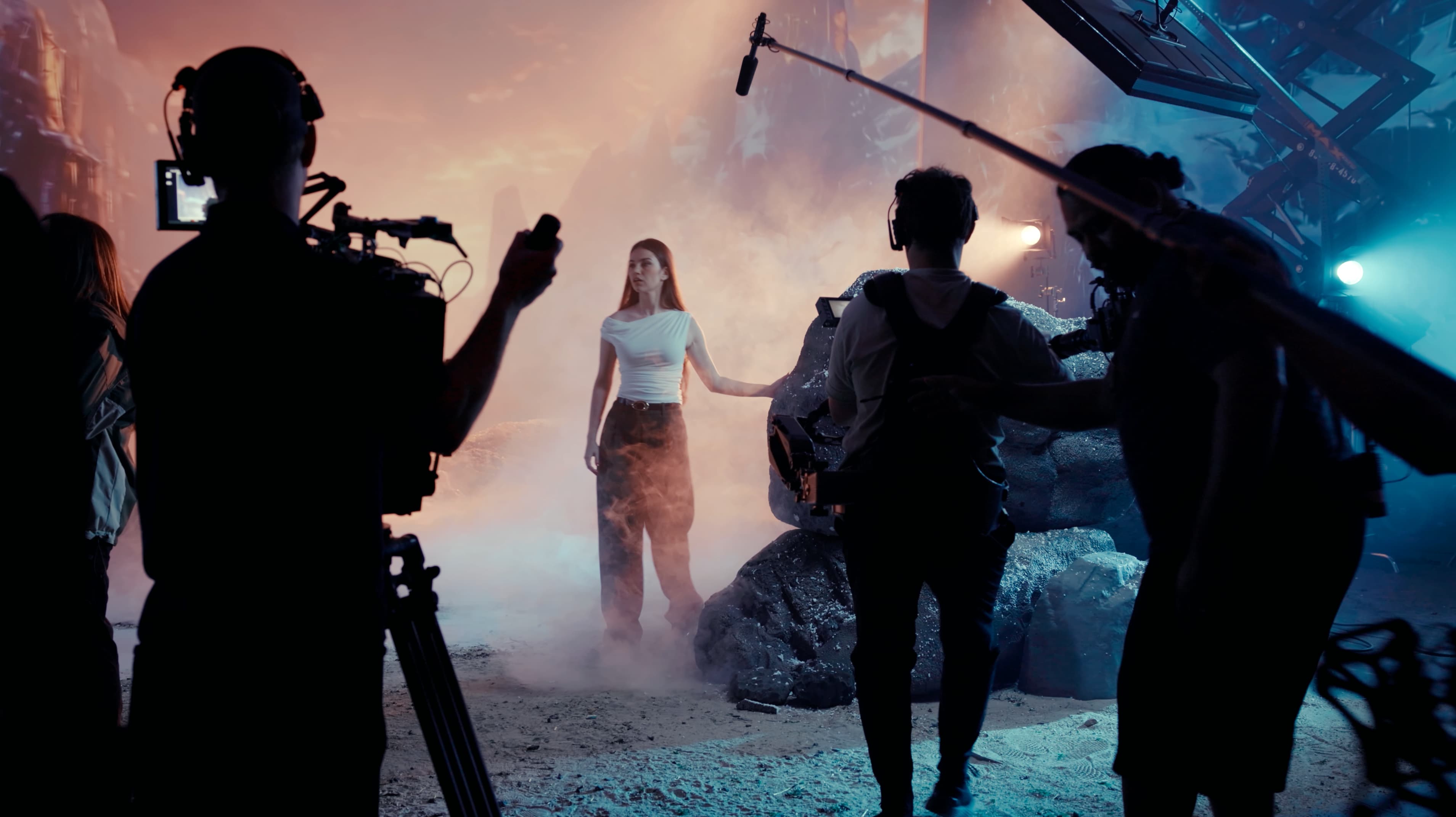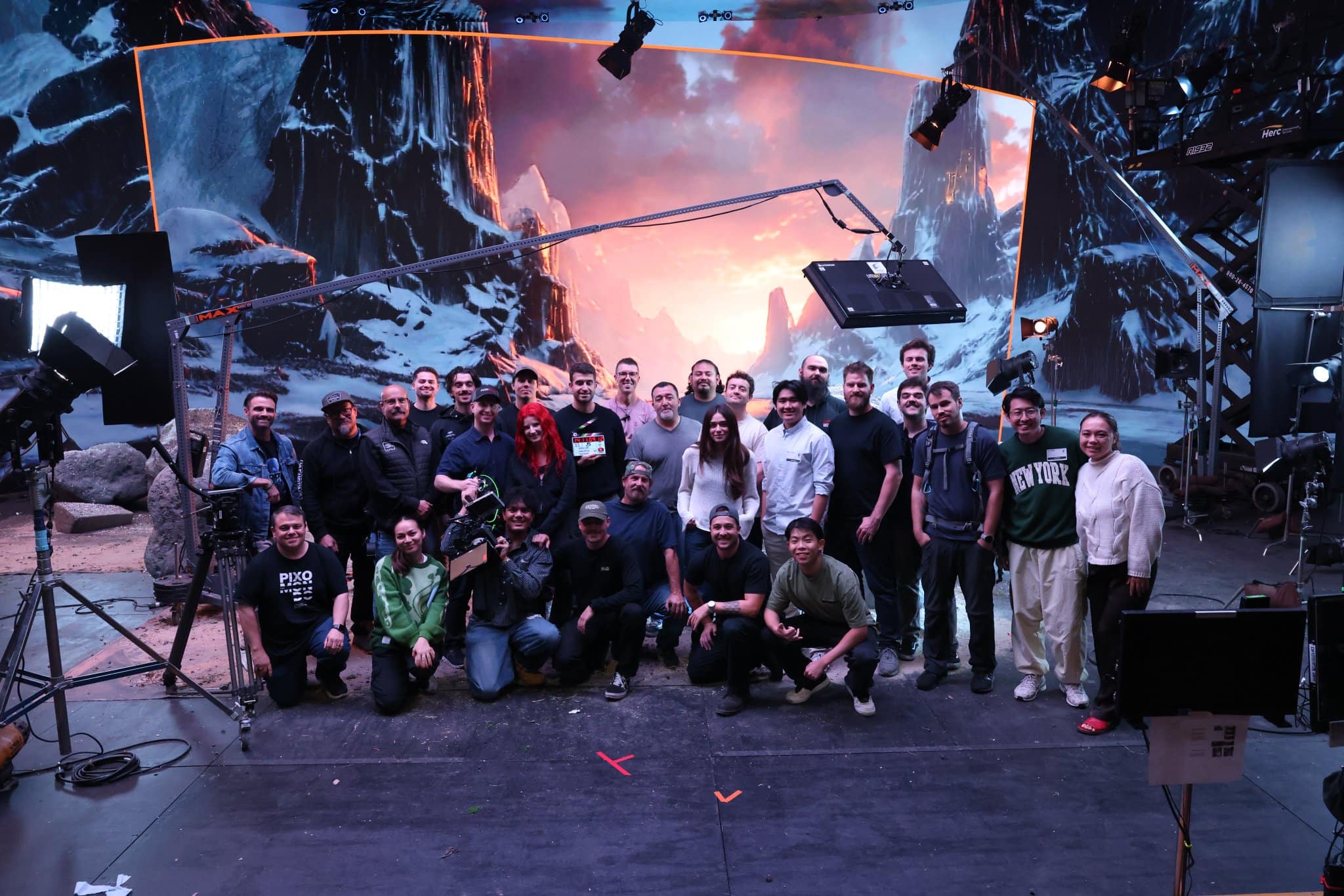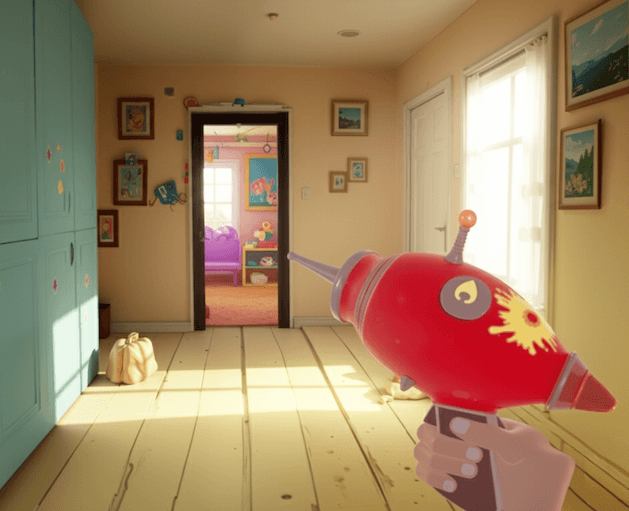Nov 12, 2025A behind-the-scenes look at how Marble powered the creation of its own launch story.
Bringing Marble to Life
Overview
When the World Labs team set out to create Marble’s first marketing video, they made a bold decision: to build it with Marble itself.
The result was a launch video created using the same technology it introduced.
Over the course of a few weeks, hundreds of 3D worlds were imagined, refined, and brought into the stage pipeline. Every scene the camera captured — from a child’s bedroom to a cosmic landscape — began as a text or image prompt inside Marble.
Using Marble gave the crew creative flexibility that traditional production couldn’t match. They could prototype, select, and capture dozens of scenes without manual 3D modeling, moving seamlessly from idea to environment.
What began as a launch video became something larger: a story about imagination itself, and a living example of spatial intelligence in action.
We’ve only ever seen these worlds on a desktop. Now we’re standing inside them... It’s larger than life.
Fei-Fei Li and Ben Mildenhall, Co-Founders
Reimagining Creation
The creative brief began with a simple question: What emotion do we want people to feel when they see Marble for the first time?
The answer, shaped in collaboration with the a16z New Media team, was childlike wonder — that universal moment when imagination feels limitless.
The video follows a child whose imagination comes alive around her, a metaphor for Marble’s promise: turning imagined worlds into reality. Every environment she explores was generated using Marble’s world models, then rendered in real time on an LED volume stage.
Producing the project this way required a new kind of workflow. The team could imagine, build, and refine dozens of environments entirely within Marble before ever stepping onto the stage.
This process allowed them to visualize, light, and redesign each scene quickly, blending 3D generation, art direction, and cinematography into one creative pipeline. What would normally take weeks of modeling and texturing unfolded in days.
It really unlocks the flow of creativity. Creators can move from idea to environment instantly—and that changes everything.
Fei-Fei Li, Co-founder and CEO
Building Worlds from Prompts
To bring Marble’s generative worlds into a production-ready pipeline, the virtual production teams at Pixomondo and World Labs collaborated closely.
Virtual production supervisor Nhan Le and his team integrated Marble’s 3D Gaussian splats directly into Unreal Engine, fine-tuning scale, depth, and lighting for the LED stage.
Dozens of environments were tested and regenerated within days, each iteration photorealistic and spatially consistent. This speed became the foundation of the shoot. Instead of scouting locations, the crew could simply describe them — a rocky tunnel opening to a sunlit mountain, or a surreal desert with mirrored clouds. Marble generated each world in minutes.
On set, director Mark Helsel and DP Cameron Nowy treated the LED walls like an infinite backlot. Worlds could shift mid-shot. Lighting could evolve in real time. Every scene became a dialogue between human intention and AI generation — precision guided by imagination.
The Emotional Core
While the production broke new technical ground, its heart remained deeply human.
The story — a girl discovering the wonder of creation — mirrored the experience of the filmmakers themselves, many seeing their generated worlds at full scale for the first time.
When the first Marble environment appeared on the LED wall, the set went quiet as the team took it in — seeing these digital worlds at full scale for the first time.
As kids, we imagine whole worlds. With Marble, you can actually step inside them.
Richard Nguyen, a16z New Media team
That sense of wonder defined the project. It wasn’t about showing what Marble could do; it was about capturing what creativity feels like when the tools get out of the way.

A Glimpse of Spatial Intelligence
For the World Labs team, the launch video became a tangible expression of their mission: unlocking spatial intelligence — AI that can perceive, generate, and interact with the 3D world.
Marble’s generative worlds don’t just visualize space; they understand it. Every surface, light source, and structure carries geometric and semantic information that makes it editable, navigable, and persistent.
This foundation opens possibilities far beyond creative production — from robotics and architecture to design, art, and immersive storytelling.
Spatial intelligence transforms seeing into doing, understanding into reasoning, and imagination into creation. This project shows how it can empower everyone to build and explore worlds of their own.
Fei-Fei Li, Co-founder and CEO

The World That Built Itself
By using Marble to create its own story, World Labs turned the act of making a marketing video into a proof of concept — a live demonstration of generative 3D intelligence.
The production fused artistry, engineering, and emotion into a single workflow, revealing what’s possible when imagination becomes interactive.
In the end, the project stands not just as a piece of marketing, but as a vision statement: a world built by the very technology that made it possible.
Marble was made to turn imagination into space. And for this project, we built the world that built us.
Dr. Fei-Fei Li
Read More
Nov 12, 2025
Scaling Robotic Simulation with Marble
How researchers are using Marble’s generative worlds to accelerate robot training, testing, and real-to-sim transfer.

Nov 12, 2025
Splat World: Exploring New Dimensions of Gaussian Splatting in VR
How one developer turned Gaussian splats into a new language for building interactive worlds.
